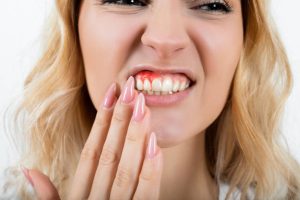
Man face divided into two parts one healthy and one unhealthy. Yellowish eyes and skin. Bad habits vs good habits. Jaundice, liver failure. Risk factors of alcohol drinking. High quality photo
Jaundice: Overview and Information
What Is Jaundice?
Jaundice is a medical condition characterized by the yellowing of the skin and the whites of the eyes (sclera) due to an excess of bilirubin in the blood. Bilirubin is a yellow pigment that is produced during the breakdown of red blood cells. Jaundice can be a sign of various underlying health issues and is often an indicator of liver dysfunction or disease.
Causes of Jaundice
Jaundice can arise from issues with the liver, bile ducts, or red blood cells. The primary causes are categorized into three main types:
- Pre-Hepatic Jaundice (before the liver):
- Hemolytic Anemia: Excessive breakdown of red blood cells leading to increased bilirubin production.
- Sickle Cell Disease: A genetic disorder causing abnormal red blood cells to break down more rapidly.
- Thalassemia: A genetic disorder affecting the production of hemoglobin and resulting in increased red blood cell breakdown.
- Hepatic Jaundice (within the liver):
- Hepatitis: Inflammation of the liver, often caused by viral infections (hepatitis A, B, C).
- Cirrhosis: Scarring of the liver tissue from chronic liver damage due to factors like alcohol abuse or chronic hepatitis.
- Liver Tumors: Tumors in the liver can impair its ability to process bilirubin.
- Alcoholic Liver Disease: Damage to the liver from excessive alcohol consumption.
- Post-Hepatic Jaundice (after the liver):
- Bile Duct Obstruction: Blockage of the bile ducts due to gallstones, tumors, or strictures.
- Cholestasis: A condition where bile flow is impaired, leading to bile accumulation in the liver.
- Pancreatic Cancer: Tumors in the pancreas can obstruct bile ducts, causing jaundice.
Symptoms of Jaundice
- Yellowing of the Skin and Eyes: The most noticeable symptom, often starting in the sclera (whites of the eyes) before affecting the skin.
- Dark Urine: The urine may appear darker than usual due to high levels of bilirubin.
- Pale Stool: Stools may become pale or clay-colored because of reduced bile reaching the intestines.
- Itching (Pruritus): Elevated bilirubin levels can cause itching of the skin.
- Abdominal Pain: Pain or discomfort in the upper right side of the abdomen, especially if liver disease is the cause.
Diagnosis
Diagnosing the cause of jaundice involves several steps:
- Medical History and Physical Examination: To assess symptoms and possible risk factors.
- Blood Tests: To measure bilirubin levels and liver function, and to check for anemia or infections.
- Imaging Tests: Ultrasound, CT scan, or MRI to examine the liver, bile ducts, and surrounding organs.
- Liver Biopsy: In some cases, a biopsy may be needed to assess liver damage or disease.
- Endoscopic Procedures: Such as endoscopic retrograde cholangiopancreatography (ERCP) to visualize and potentially treat bile duct obstructions.
Treatment
Treatment for jaundice depends on the underlying cause:
- For Hepatic Causes:
- Hepatitis: Antiviral medications or immunizations.
- Cirrhosis: Management of symptoms and complications, lifestyle changes (such as reducing alcohol intake), and possibly liver transplantation in severe cases.
- Liver Tumors: Surgical removal, chemotherapy, or radiation depending on the type and stage of the tumor.
- For Pre-Hepatic Causes:
- Anemia: Treatment of the underlying cause of anemia, such as blood transfusions or medications.
- For Post-Hepatic Causes:
- Bile Duct Obstruction: Removal of obstructions through surgery or endoscopic procedures.
- Cholestasis: Treatment may include medications to improve bile flow and managing symptoms.
Home Remedies and Lifestyle Changes
- Healthy Diet: Eating a balanced diet to support liver health and overall well-being.
- Hydration: Drinking plenty of fluids to help the liver function properly and maintain hydration.
- Avoid Alcohol: Limiting or avoiding alcohol consumption to reduce liver strain and damage.
- Regular Medical Checkups: Monitoring liver health and addressing any issues promptly.
When to See a Doctor
Seek medical attention if:
- You notice yellowing of the skin or eyes.
- You have dark urine or pale stools.
- You experience severe abdominal pain or persistent itching.
- Symptoms of jaundice are accompanied by nausea, vomiting, or unexplained weight loss.
Conclusion
Jaundice is a symptom that can signal a range of underlying conditions, from liver disease to bile duct obstructions. Identifying the cause is essential for effective treatment and management. If you or someone you know exhibits symptoms of jaundice, it is important to consult a healthcare provider for a proper diagnosis and appropriate care.








